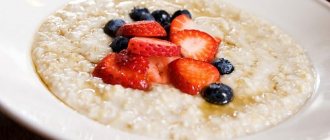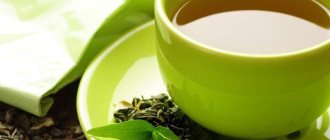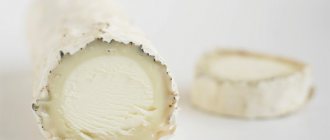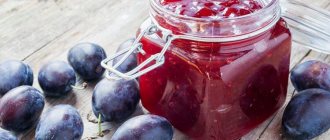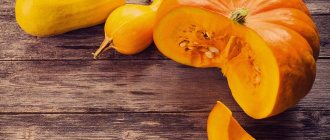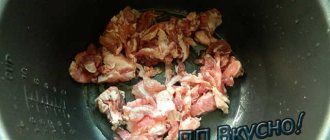Quinoa is an annual plant that prefers to grow in warm regions of South America. Despite its short lifespan, the plant can reach a height of one and a half or even 2 meters. It has a tall stem on which there are round leaves of light green color. The fruits are collected in large clusters, and the grains resemble buckwheat in shape. There are several types of quinoa: beige plant, red and black. The plant is most common at high altitudes, starting from 3000 meters above sea level. It prefers difficult climatic conditions and mountain slopes; its homeland is considered to be the shore of Lake Titicaca, the largest of the high-altitude lakes.
It has been known for a very long time; in particular, this plant was part of the diet of the Indians of South America. Even in ancient times, the Incas used it in everyday dishes along with potatoes or corn. Quinoa could even replace bread or rice in cases where there were poor harvests. Much later, this amazing plant began to be artificially grown in the mountains. Including with the approval of the Dalai Lama, it began to be cultivated in Tibet. The plant also takes root well on the seashore or in places where there used to be a jungle.
More than 90% of the plant that is grown in Peru and Bolivia is sent to the United States of America, and the rest is sent mainly to European countries. It is so highly valued, including due to its purity and naturalness: it is prohibited to use genetically modified organisms during cultivation, even to help the plant fight pests or increase yield.
Despite its taste and uses, quinoa is not actually a grain. Its closest relatives are considered to be vegetables, in particular the familiar beetroot. Flour is made from the seeds of this amazing plant, and the leaves and stems are often used instead of vegetables.
How to choose
Like any other grain crop, quinoa seeds are sold packaged or open by weight. If you have no choice and have to buy packaged goods, be sure to give preference to packages in which you can see the contents. Quality products must be presented free of impurities and be uniform in size, texture and color. As for the product in bulk, it must be dry, clean and uniform in color.
The purchased products should be placed in a glass container, carefully closed with a lid, and placed in a cool, dark place. It is best to buy this cereal in specialized online stores, because... It is quite difficult to find it in supermarkets, especially of good quality.
Use in cooking
Quinoa is readily used by vegetarians who prepare first courses or side dishes from it. To cook quinoa correctly, you need to remember a few basic rules:
- Rinse thoroughly to remove the bitter taste of quinoa.
- Carefully monitor the time when cooking the product: overcooked quinoa will turn sour very quickly.
- The finished porridge must be stirred well so that it does not stick together.
When cooked, this plant is similar to brown rice, and the cooking rules for it are approximately the same: use 2 parts water for 1 part quinoa, and then cook over low heat for about 20 minutes until the moisture is completely absorbed.
Quinoa is used as a side dish and goes well with fish, poultry, meat or vegetables. It is also actively used for preparing first courses, replacing cereals. Some people use it to create sweets by adding fruit or honey. In general, the advice for choosing quinoa dishes is very simple: if rice suits you in this dish, then this plant will suit you too.
To increase the usefulness of the plant, you can try to germinate it. In this form, it increases the content of beneficial vitamins and also promotes good digestion. The huge difference from other cereals is that it only takes 2 to 4 hours to germinate. You can then use it in quinoa salads or cook quinoa into porridge.
Flour, which is obtained from grains, is used for baking and any dough products, including pasta. If you add water and sugar of your choice to quinoa, you will get a cool drink that perfectly quenches your thirst. In addition, oil is obtained from the seeds, which is somewhat reminiscent of nut oil.
The Incas and Aztecs used quinoa so often in cooking that there are hundreds of recipes using it. Due to its abundance, mild taste and nutritional value, quinoa has been used as a side dish everywhere, replacing many foods. Nowadays, quinoa in cooking is mainly used to create national dishes, of which there are also a lot. For example, the Spaniards use this plant instead of rice to prepare their national pride - paella. In Italy, boiled grains are used as cereal; spices, olive oil and tomatoes are added to them. In Greece, quinoa is made with vegetables, adding tomatoes, cheeses and spices to the grains.
In all countries, quinoa is widely used for stuffing poultry, for adding to first courses or as an addition to salad. Baked goods made from quinoa flour have a special fluffiness and pleasant texture.
Quinoa: recipe
In supermarkets, quinoa is sold in the form of flakes or cereals. There are three types of grains: black, yellowish and red. They do not differ significantly in taste and nutritional properties, so to save money, you can buy cereals of any color, focusing on the price.
Dietary quinoa porridge, which has very low calorie content, is the most acceptable and widespread dish made from this cereal. The recipe for making porridge is simple and accessible to any housewife:
- The grains must be thoroughly rinsed under running cold water.
- If the cereal purchased in the store is cleared of a dense shell, then there is no need to pre-soak it. Before preparing the porridge, you should try one grain; if it is bitter, then it is better to pour cold water over the grain for two or three hours, then rinse it again.
- To prepare the porridge, you need to take a fairly large pan, since the volume of the porridge will increase four times during cooking. For one part of cereal you should take two parts of liquid.
- Pour water into a saucepan, put on fire, add salt. Pour the prepared cereal into boiling water and continue to cook over low heat with the lid closed. During the cooking process, the porridge should be stirred several times so that it does not stick to the bottom of the pan.
Cook the porridge until the water is completely absorbed (about fifteen minutes) under a closed lid, then open the pan and keep on the fire for one or two minutes (until the liquid has completely evaporated). The porridge is ready to serve.
Calorie content and chemical composition
Per 100 grams of the finished dish there are only 120 kcal, and it also has a low glycemic index.
Therefore, nutritionists consider it an ideal dish for those who want to lose weight or maintain a healthy lifestyle. The main benefit of quinoa is that it contains a very large amount of vegetable protein, which is very easily and quickly digested. It is for this reason that these grains are readily used by vegetarians in almost all dishes, and they are also recommended for children, pregnant women and people with intellectual or physical work. Chemical composition of quinoa (per 100 g)
| Squirrels | 14.12 g |
| Water | 13.28 g |
| Fats | 6.07 g |
| Ash | 2.38 g |
| Alimentary fiber | 7 g |
| Carbohydrates | 57.16 g |
| Calorie content | 368 kcal |
| Vitamins | |
| Vitamin B9 | 184 mcg |
| Kholin | 70.2 mg |
| Microelements | |
| Potassium | 563 mg |
| Magnesium | 197 mg |
| Copper | 590 mcg |
| Phosphorus | 457 mg |
Due to the high concentration of lysine in the product, the body can better absorb calcium, which enters the body at about the same time. In addition, lysine stimulates wound healing and helps bone formation. The high fiber content of 2.8 g per 100 g helps in the fight against diabetes or excess weight, and also helps those with heart disease.
Fiber also helps the body get rid of harmful substances and toxins, removes harmful cholesterol from the body and stimulates digestion. In addition, it is believed that daily consumption of fiber significantly reduces the risk of developing cancer. The high percentage of phosphorus content makes it possible to replace many types of fish with this plant.
The benefits of quinoa for health and weight loss
Quinoa is an extremely rich source of nutrients, minerals and can be an excellent addition to the diet.
A number of studies show a decrease in sugar and an increase in triglyceride levels in the blood of people who eat it daily. Quinoa has a low glycemic index and an average glycemic load (53 and 13, respectively), which means that the blood is not quickly saturated with sugar and can be eaten even by diabetics.
Vegetarians and vegans can feel the benefits of quinoa - it contains a sufficient amount of proteins, which in turn contain all the essential amino acids. These are the building blocks of protein, which can mainly be obtained through meat.
Quinoa is an excellent meat alternative for vegetarians, as 1 serving contains 16% of the daily value of protein. In addition, it is gluten-free, full of fiber, magnesium phosphorus and iron.
For weight loss, quinoa will be useful primarily by reducing appetite. It also has a positive effect on cleansing the gastrointestinal tract of toxins and waste. There are many diets based on this cereal that demonstrate real progress in losing weight. The beneficial properties of quinoa can hardly be overestimated; it is often recommended by doctors and has no contraindications for use.
How to sprout quinoa
For germination you need to use no more than 110 g of grain, this can be done in several stages:
- Rinse the grains well - this will remove the bitter taste from them, and then dry them well.
- pour cold water over the grains until it covers them completely;
- leave them for half an hour;
- drain the water and leave them to dry.
Then the procedure must be repeated and the grains washed every 8 hours for 48 hours.
- Place a thin layer of grains on a baking sheet and place them in a dark place. Since they will be sitting for a long time, cover them with a cloth to prevent dust or dirt from getting in. The temperature in the room should not be very high, but the cold will ruin the entire enterprise. Leave them for 12 hours.
- After drying, the sprouts should be stored in the refrigerator, in a carefully closed container, preferably glass. Use them within 2 weeks because... they quickly begin to deteriorate, and all the beneficial properties of quinoa are quickly lost.
Application
Most often, porridge is cooked from Quinoa. To do this, the cereal is washed and soaked for several hours to remove the bitterness. After this, cook for 15 minutes. For 1 glass of cereal you need 2 glasses of water. You can pre-heat the cereal in a frying pan if you prefer. Some grind it into flour, adding it to soups, while others prepare drinks or sprouted grains. In any case, consuming the product is beneficial, so everyone chooses what they like.
By consuming this porridge, you can get rid of many diseases once and for all and improve the condition of your body. Even children and allergy sufferers can consume it, because Quinoa does not contain gluten.
Market Analytics
- COVID-19 is changing the rules of the game in the cosmetics market
- Beauty of the future: cosmetic innovations 2020
- New ingredients are the driving force of the cosmetics industry
Convenient search for beauty salons on our website
Beauty salons in Moscow Beauty salons in St. Petersburg Beauty salons in Ekaterinburg Beauty salons in Novosibirsk
Latest blog posts on our website
- Naturecream / Geranium (Pelargonium) oil for skin health and beauty
- Prostye-sovety / Save on a beauty salon: procedures that can be done at home
- Naturecream / Growth Factor - brings back youth?
- Oksana-Lezina / 3 effective abdominal exercises from a fitness instructor for beginners
- Prostye-sovety / Making perfect curls at home
- Prostye-sovety / Which hair removal method to choose
- Naturecream / Wrinkles Puppets
- Naturecream / PEPHA-TIGHT - instant skin lifting
- Naturecream / Blue light - a danger to the skin
- Naturecream / Cocoa Butter – A treat for the skin
Latest forum topics on our website
- Mrs._Smith / Badly sunburned! What to do?((
- Ice / Is it necessary to combine fitness classes with a diet?
- Antonova / What can be used for hair loss?
- Radio operatorKat / Who was on a protein diet?
- Suzanna / Mesotherapy on the face
Other articles in this section
| Corn flakes Corn flakes are a popular product today, which has an interesting history of its “invention”. This happened at the end of the 19th century in the USA, when the Kellogg brothers, the owners of the sanatorium, decided to add cornmeal dishes to the diet of the patients of their establishment. They started preparing a dish from flour in the kitchen, but they urgently needed to leave for the city. Returning to the sanatorium, they were disappointed, because the flour dish had clearly deteriorated, and the dough had turned into lumps. They felt sorry for throwing away flour, so they rolled out the failed dough into small layers and fried them in oil. As a result, the resulting dish turned out to be extremely tasty: the flakes crunched pleasantly on the teeth, and with the addition of milk it was completely impossible to tear yourself away from them. This is how corn flakes were born. |
| Barley flakes It is believed that barley flakes first appeared in Asian countries, and from there they began to spread throughout the globe. Flaked barley is a fastidious cereal that can grow at an altitude of about 4500-5500 meters above sea level. |
| Buckwheat (kernel) Buckwheat is native to the mountainous areas of Nepal and India. This cereal is one of the key products in the diet of any person. Due to the rich fiber content, buckwheat dishes are the best product for weight loss. It is worth noting that due to the content of difficult-to-digest carbohydrates, buckwheat does not increase blood sugar levels. As a rule, for people suffering from diabetic diseases, buckwheat becomes a staple food product. |
| Cooked bulgur According to approximate and unproven historical data, bulgur has been eaten for about 4000 years. For several thousand years, this product has been in great demand in many countries, for example, in India, where people cannot imagine preparing main dishes without it. |
| Buckwheat porridge Buckwheat is a cereal obtained from seed buckwheat. Northern India is considered the birthplace of buckwheat, where it is called “black rice.” They began to grow it there more than 5 thousand years ago. In Russia, this plant is called buckwheat, because. It was brought to the Slavs from Byzantium in the 7th century. |
| Oat groats |
| Buckwheat (prodel) In the mountainous regions of India and Nepal, buckwheat was cultivated about 4 thousand years ago. There is no exact information about the import of buckwheat to Russia, although according to one version, it came to us from Greece, which is reflected in its name. It is reliably known that this cereal was known on the territory of Kievan Rus already in the 10th - 11th centuries. |
| Buckwheat porridge is viscous in water Buckwheat is a triangular seed of common or common buckwheat; it has nothing in common with other cereals. Buckwheat originated in Northern India and was cultivated more than five thousand years ago. It came to the Slavs from Byzantium, which is why its name “buckwheat” is associated. In Europe, it is still called “Russian bread”. |
| Wheat bran Wheat bran itself acts as a by-product of the flour industry. Wheat bran is the husk that protects the grain and is suitable for use as food. In the process of making flour from wheat of the highest quality, the bran waste contains: the flower shell of the grain, the aleurone layer of the endosperm and the grain germ. These components contain at least ninety of all useful substances from the total amount present in wheat grain. During the processing of wheat at the grinding stage, the bran husk is isolated from the grains so that the bran germ does not make the flour rancid, and the brownish aleurone layer of the endosperm does not disfigure the appearance of the flour product. |
| Buckwheat porridge from kernels As a food crop, buckwheat has been cultivated, according to various sources, for 2.5 to 5 thousand years. The birthplace of everyone's favorite porridge is the Himalayas, where the mild, humid climate contributed to the formation of valuable grains, and where even now wild buckwheat species are found. It came to Russia back in the 1st century AD, according to the famous cuisine historian Pokhlebkin, through Greek Orthodox monks, for which it received its “geographical” name. However, the widespread use of cereals in everyday nutrition began only in the 15th century, and over time it became one of the elements of national culture. In some Western countries, buckwheat porridge is known as “Russian”. |
Application for weight loss
This plant is excellent for weight loss. Despite the high calorie content of quinoa, it is actively used in diets.
The fact is that grains take a very long time to digest, providing a long-lasting effect of satiety, so that the diet becomes simpler and painless.
This is the best way to give yourself a hearty and healthy breakfast. Quinoa is often used in a special gluten-free diet, which has long been proven effective. In addition, such a diet normalizes the functioning of the body and promotes good digestion. Due to their high percentage of protein, grains can be used as part of protein diets.
Beneficial features
Best materials of the month
- Why you can't go on a diet on your own
- 21 tips on how to avoid buying stale food
- How to keep vegetables and fruits fresh: simple tricks
- How to curb your sweet cravings: 7 unexpected products
- Scientists say youth can be extended
For the first time, the medicinal properties of this plant were discovered by people who consumed it daily. Then the beneficial effects of this culture on the cardiovascular system became noticeable, including as an effective fight against migraines. This is due to the fact that magnesium contained in plants helps relieve vascular tension.
In addition, quinoa is great for supporting health at any age: for children it is useful as it stimulates bone formation, for older people it helps get rid of arthritis. But for this it is important to use it regularly. In addition, regular use of this plant in food maintains stable blood sugar levels, which is very useful for diabetes. It prevents the development of cardiovascular diseases and also supports the body in the fight against anemia.
Doctors recommend eating this plant for those who need support for the body, in particular, people after surgery or those who are struggling with a complex disease, such as cancer. Quinoa will be no less useful for those who daily devote a lot of strength and energy to physically difficult or intense intellectual work.
Quinoa is also very beneficial for those who have high blood pressure or other cardiovascular diseases. This plant contains a large amount of a substance called tryptophan, which stimulates the production of the joy hormone. This means that this plant can really lift your spirits. The absence of gluten in cereals allows it to be added to the diet of even people suffering from allergies.
Quinoa is rightfully considered one of the healthiest grains in the world.
The main advantage of this plant is that it contains many more nutrients, minerals and vitamins than most other grains. This means that it is healthier than rice, wheat or any other grain. Nutritionists often compare quinoa to mother's milk, since this cereal is also almost completely absorbed.
Quinoa contains saponins - substances that, when consumed regularly, help the normal functioning of the pancreas and also keep cholesterol levels in the blood under control. When absorbed through the blood, these substances are poisonous, but in the digestive tract they are normally absorbed and even provide benefits.
How to cook quinoa
When you head to your local health food store, chances are that quinoa will be readily available to purchase and prepare.
The best thing about cooking grains is that they usually have a fairly simple and unremarkable flavor when cooked in water. The lack of taste exponentially increases the versatility of the recipes you can create with this product.
If you're looking for an easy way to deepen the flavor, you can try simmering it with beef, chicken, or vegetable broth instead of plain water. You can also experiment with black grains, as the flavor is more noticeable.
Cooking quinoa can be a great alternative to traditional oatmeal for breakfast. Just boil the cereal in water or milk, add cinnamon and your aromatic dish is ready!
The standard cooking time for quinoa is 10 minutes.
It's important to remember that processed foods such as pasta or bread made with quinoa flour do not offer the same health benefits of quinoa as regular grains. Therefore, if you want to try a more complex product, it is better to prepare it yourself. It's pretty easy to do! Simply take 1-2 cups of cereal, fry in a dry frying pan for about 5-7 minutes, stirring occasionally, then cool. Blend in a high speed food processor or blender until the quinoa has a nice fine texture.
Application in cosmetology
In cosmetology, ground quinoa seeds are actively used; they are recommended to be added to masks and scrubs for cellulite. In addition, they help renew the skin, making it softer and more delicate. Extracts and extracts from this plant are often used in professional cosmetics, because The plant is believed to have a pronounced lifting effect.
Hazardous properties
If you have any kidney problems, you should consult your healthcare professional before using this product. The fact is that the plant contains a large amount of protein and oxalates. Be careful when introducing quinoa into your diet if you are feeding a child or a nursing woman.
But remember that this cereal cannot cause serious harm to the baby’s body, so it must be introduced into the child’s diet very carefully. However, this rule applies not only to children, but also to adults: before you start actively using this useful plant, you must either consume it in small quantities or consult a doctor.
More fresh and relevant information about health on our Telegram channel. Subscribe: https://t.me/foodandhealthru
We will be grateful if you use the buttons:
BJU and number of calories of quinoa
Below is the amount of carbohydrates, proteins, fats and calories contained in cereals in regular and boiled form per 100 g of product.
So, in its usual form, 100 g contains:
· 14.1 g of proteins;
· 6.1 g fat;
· 57.2 g carbohydrates.
This is the nutritional value of quinoa. The calorie content of the raw product is 368 kcal.
And the calorie content of boiled quinoa is 125 kcal per 100 g. As for the energy value, in this case the indicator is as follows:
· proteins - 4.75 g;
· fats - 2.03 g;
carbohydrates - 21.73 g.

